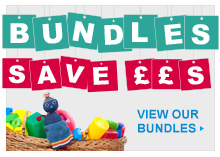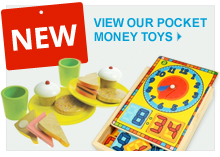
Ah language and communication! As parents, one of the milestones we long for is to hear our child say our name. But then a few months down the line, after our toddlers have repeated ‘mummy?’ or ‘daddy?’ for the 500th time, how many of us can honestly say we haven’t briefly, but wistfully, remembered the months of baby ‘quiet’ when our child was blissfully silent?! When you think about it the ability to talk and communicate our needs and desires is incredible. It is one of the skills that separate us from the rest of the animal kingdom and it is something that as parents we can do a lot to encourage and develop.
Speaking
An infant is born with the ability to learn any language, with a blank linguistic canvas if you will; and they spend their time listening to every word we say! This means that a child who grows up surrounded by multiple languages will grow up to be multi-lingual. This shows how significant the language that surrounds a child is, in terms of teaching a child how to talk.
When playing with your child talk about what you’re doing: what the toy looks like, what colour it is etc. this will all help to build their word bank.
Blowing bubbles can help to encourage kids to try different lip shapes. There are all sorts of words that you can use to describe each bubble and you’ll be surprised by how much children love an over-exaggerated ‘pop’!
When driving in a car you can have lengthy discussions with your child. One of my clearest childhood memories is when my mum saw a combine harvester in a field and then spent the rest of the car journey talking about what it was, how the farmer used it and why and all sorts of other things related to farming. The time in a car can also be used to sing which is also important in developing language.
Reading
Reading to your child is also an important way to help them to talk. It can also be a wonderful way to bond with them. In turn it also helps to develop their reading skills.
Hopefully I have got the point across that the best way to help your child to learn to talk is to talk to them!
While reading to your child is a perfect way to help them to develop their reading skills there are also toys that can help with this. Jigsaws are a first step in learning to read because they help children to recognise and match shapes, which in essence is the basis of reading. Simple puzzles for babies and toddlers such as John Crane Tidlo Chunky Farmyard Puzzle help to develop shape recognition and build vocabulary related to animals.
Shape sorters are another great one for shape recognition. As a child grows more complex puzzles such as the Big Jigs Tractor Tray Puzzle will continue to build this ability to match shapes. Another puzzle that supports reading but will also help with letter and sound recognition and spelling for an older child is the Melissa and Doug See and Spell Puzzle. Talking to your child about other things that start with the same sound can extend this puzzle and build a greater vocabulary. Lots of toys come with letters written on them and you can extend these in the same way. Don’t be afraid to teach the letter name as well as the letter sound, so long as you differentiate them for your child: this is an A (ay) and its sound is an ‘a’ (as in ‘a’ for apple).
Writing
Mark making is the basis of writing, so as I said in my creativity article ensure that your child has access to paper and crayons/pencils etcetera. Make sure that your child sees you writing and help them to understand what the purpose of your writing is: “I am writing a list so that when we go shopping we remember what to buy.†You could allow them to ‘write’ their own list at the same time. Wooden letter sets such as the John Crane Tidlo Magnetic Letters can be used by both you and your child to leave messages for someone else, or each other, on a fridge. Once you’ve both completed your messages take turns to explain what you have written! Children are fascinated by writing, so explaining what you are doing and what you have written will always be of interest to them and in turn it will help them to know that marks and letters always have a meaning to them.









